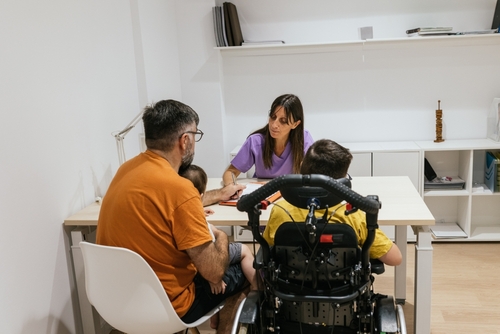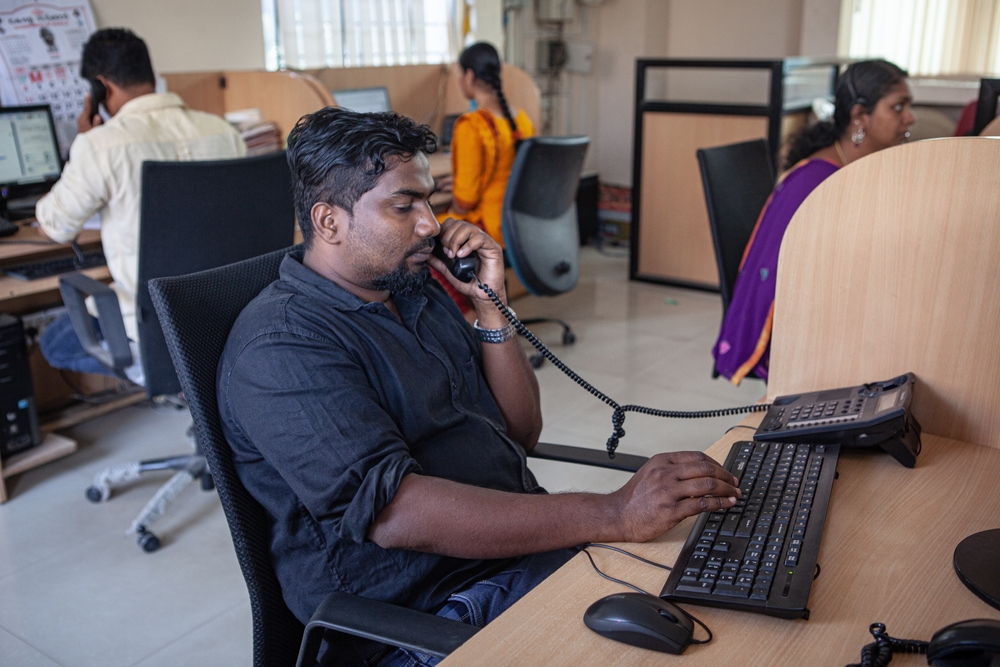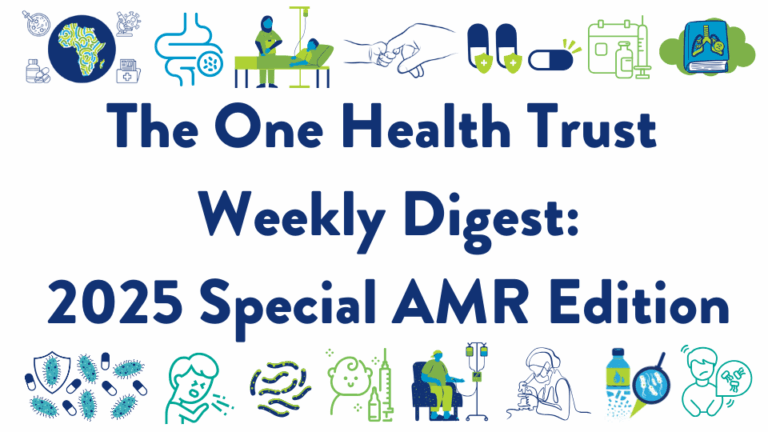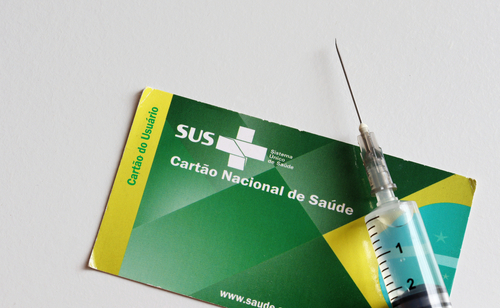July 11, 2022

Vaccines’ role in combatting AMR must inform investment decisions.
One Health Trust Director, Dr. Ramanan Laxminarayan, and collaborators are calling for policymakers and funders to include vaccination in AMR mitigation plans as studies continue to highlight the value of vaccines in reducing infections and the need for antibiotic use. The rapid response of vaccine developers to the COVID-19 pandemic shows that the vaccine development process does not need to be lengthy. Upfront funding and greater coordination between clinical trial groups, regulators, and policymakers, can decrease the time to license vaccines. Additionally, new vaccine platforms that have been proven effective will hopefully overcome the difficulties that have impeded bacterial vaccine development in the past. [Lancet Infectious Disease]
Scaling-up of tuberculosis preventive treatment (TPT) regimens would be cost-effective and improve TB-associated outcomes.
Using outputs from a model simulating scale-up of tuberculosis (TB) preventive treatment (TPT) regimens meeting minimal and optimal criteria, researchers conducted a cost-effectiveness analysis in Brazil and South Africa, two settings with relatively low and high TB transmission and HIV and rifampicin-resistant TB (RR-TB) prevalence, respectively. In Brazil, the expansion of TPT optimal regimens to 100% coverage among high-risk groups would reduce TB-associated disability-adjusted life years (DALYs) by up to 9%, whereas in South Africa, with higher TB transmission and higher HIV prevalence, the reduction would be substantially higher—by up to 38%. The authors suggest that, despite higher costs linked to novel regimens, expansion of TPT to better cover high-risk groups would likely be cost-effective. [PLOS Medicine]
Health systems strengthening is needed to address AMR in contexts of extreme scarcity.
Researchers conducted medicine interviews (100), ethnographic fieldwork (six-month period), and key informant interviews (33) with participants in two villages in rural Chikwawa, Malawi, to understand the care and medicine use practices among households dependent on subsistence farming. The most frequently used drugs were cotrimoxazole and amoxicillin, both available in the Access list of the WHO’s AWaRe category. Participants recognized that keeping, sharing, and buying medicines informally was not ideal for their personal or public health. Still, they reported using antibiotics and other medicines in these ways because of precarious conditions, barriers to formal healthcare, and the inevitability of future illness. Awareness campaigns inadequately address AMR when dealing with extreme scarcity, and health systems strengthening interventions are urgently needed. [PLOS Global Public Health]
Discordance in data from studies on long COVID hinders policy development.
Policymakers are struggling with disparate answers to basic questions addressing long COVID’s frequency and the impact of reinfection on the risk of developing the condition. There is no agreement on how to define and diagnose long COVID, which has been linked to more than 200 symptoms, with severity ranging from inconvenient to debilitating. The condition can last for months or years and reappear, with estimates of its prevalence ranging from 5–50%. While differences in study results complicate policy decisions, researchers can still examine trends. For example, there are various estimates regarding the impact of vaccines on long-COVID risk, but evidence from multiple studies suggests that vaccines are better than no vaccines. [Nature]
Interaction with microplastics could increase virus stability and dissemination.
Researchers compared the viability of two types of viruses, an enveloped or lipid-coated bacteriophage virus that only infects bacteria and a nonenveloped rotavirus that incites diarrhea and upset stomachs in humans, in three types of treated water with and without the presence of microplastics. The lipid membrane surrounding the bacteriophage virus led to its quick decay with or without microplastics present, but the membraneless rotavirus remained stable during a 48-hour test period when surrounded by microplastics. [Environmental Pollution]
Better identification of disease outbreak hotspots is needed for future pandemic policy decisions.
Using data from the official Santé Publique France database, researchers developed spatial autocorrelation analysis, thematic mapping, hot spot analysis, and multivariate clustering to assess the efficiency of the global lockdown policy in limiting spatial contamination. The extreme heterogeneity of local situations demonstrates that clustering and intensity are decorrelated indicators. The lack of algorithms that include statistical-spatial outliers and an inappropriate assessment of data quality can lead to cluster analysis bias and the inability to identify COVID-19 hotspots, ultimately affecting pandemic management. [BMC Public Health]
COVID-19 infection in patients with a history of vaccine-induced immune thrombotic thrombocytopenia (VITT).
VITT, characterized by concurrent thrombosis (clot formation in blood vessels) and thrombocytopenia (low platelet count), is an extremely rare and sometimes fatal vector-based condition. Researchers performed a periodic evaluation of VITT antibody status in 69 patients with a history of VITT who had received an adenovirus vector Covid-19 vaccine, to investigate any possible links between the immune responses against the SARS-CoV-2 spike protein (induced by Covid-19 or any Covid-19 vaccines) and against PF4 (induced in association with VITT). In line with prior in vitro studies, the study showed no connection between the two processes; Covid-19 does not restimulate anti–PF4 antibodies in patients with a history of VITT. [The New England Journal of Medicine]
Great disparity in authorship of studies about low- and middle-income countries (LMICs).
Global health research tends to represent high-income country (HIC) authors in bylines more than those associated with LMICs. A bibliometric analysis of the annual Global Emergency Medicine Literature Review from 2016 to 2020 revealed that of 1,751 articles analyzed, 45.5% reported work from LMICs, 23.6% from upper-middle-income countries, and 22.5% from low-income countries (LICs). Of 14,113 authors, HICs had the greatest representation (40.7%). Only 31% of first- and 21.3% of last-authors were affiliated with LIC studies. Improved funding and opportunities are needed to support researchers in LMICs to decrease the authorship disparity gap. [BMJ Global Health]
The use of antimicrobials in animals worldwide is decreasing.
The World Organization for Animal Health (WOAH) has been collecting annual data on antimicrobial use in animals from member organizations since 2015. Data from 160 participating countries demonstrate a 27% decrease in the utilization of antimicrobials in animals across the world between 2016 and 2018. Progress is also seen with regards to the prudent use of antibiotics, with 70% of reporting countries no longer practicing the use of antibiotics to enhance growth in healthy animals. WOAH attributes some of these positive changes to providing access to reliable data on use of antibiotics in animals, as it assists decision-makers in determining where action is needed at a local level, aiding the global response to antimicrobial resistance as well. [World Organization for Animal Health]











